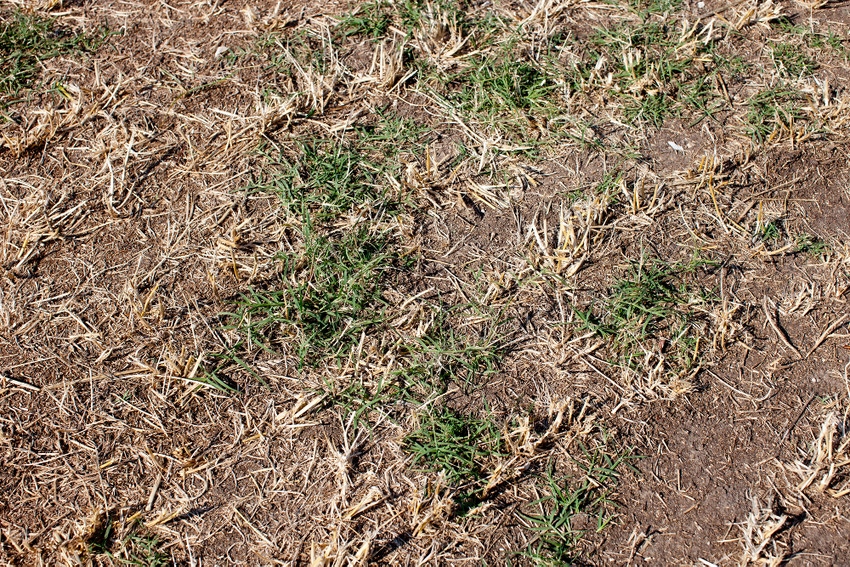When it comes to spring of 2012, looks can be deceiving.
June 1, 2012

Some farmers are calling this spring the best they’ve ever seen. Steady rains produced a flush of annual grasses, yielding the most abundant hay crop many can remember. Yes, images of emerald pastures under indigo thunderheads can make a person forget all too quickly about the 2011 drought.
“It’s been a Garden of Eden from January through April,” said Chuck Coffey, senior pasture and range consultant with the Noble Foundation. “But agricultural producers should expect to see the lingering effects of last year’s drought this summer.”
The 2011 drought produced the driest four months in Oklahoma since 1921, causing complete crop losses for farmers and causing ranchers to completely destock herds. The economic ramifications were as severe as the heat and lack of precipitation with an estimated $6 billion loss across the Texas and Oklahoma economies.
While the Southern Great Plains experienced wetter conditions this spring than in previous years, April was still warmer and drier than average for the region. According to the U.S. Drought Monitor (www.droughtmonitor.unl.edu), parts of southwestern Oklahoma and much of Texas are still experiencing abnormally dry conditions.
Agricultural consultants and researchers at the Noble Foundation are encouraging producers to not be overconfident. The flush of annual grasses is beginning to subside, revealing that the perennial pastures were severely damaged by last year’s drought, especially bermudagrass pastures. Forages – grasses and legumes consumed by ruminant animals – are essential to livestock production. “Our forage production will be tied directly to what happens with the weather in the next 60 days,” Coffey said.
Lack of precipitation in May and June could mean reduced forage growth throughout the summer, producing drought-related challenges similar to 2011. If a livestock producer cannot grow forages this summer for his herd, the challenge of finding good hay at an economical price will become daunting. “Buy hay now and expect to feed it earlier than normal,” Coffey said. “Last year’s drought was one of the worst in history. We can’t expect to get over it in one year. The winter is still going to challenge producers, but we can get a head start.”
Wise pasture management also can maximize forage growth and be the saving grace to a producer’s bottom line. “Devastating drought is a game we still aren’t used to, but one we can win through proper preparation,” Coffey said. “Producers can treat fields with a conservative dose of nitrogen to make more efficient use of whatever rain we may get.”
Coffey encouraged producers to check their pastures regularly throughout the summer to observe production. “They need to predetermine a course of action if drought conditions return,” Coffey said. “They should be prepared for all scenarios – good and bad.”
You May Also Like



